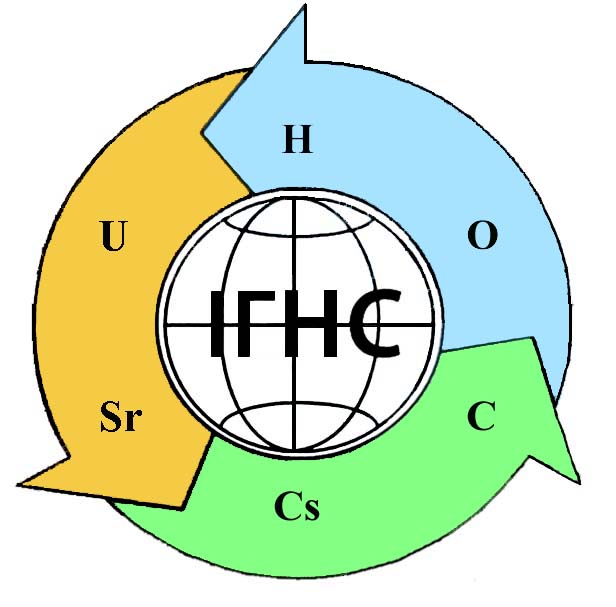BIOENERGY ON DEGRADED SOILS IN THE MOUNTAINOUS PART OF LVIV REGION: POTENTIAL AND CHALLENGES
DOI:
https://doi.org/10.32782/geotech2024.38.10Keywords:
bioenergy, renewable energy, energy crops, degradation, renewable energy sources, Carpathian region.Abstract
The article analyses the potential and challenges in the development of bioenergy on degraded soils in the mountainous part of Lviv region. Increasing the capacity of renewable energy sources is one of Ukraine's strategic goals in achieving energy independence and climate neutrality. One of these is bioenergy, which can use degraded and unproductive soils. Due to significant soil degradation, a large proportion of the land has become unfit for agriculture. That is why bioenergy crops can be grown on such lands. Such bioenergy crops include energy willow, poplar (Populus L.), black acacia (Acacia melanoxylon R.Br.), miscanthus (Miscanthus giganteus), fast-growing millet (switchgrass) (Panicum virgatum L.) etc. Each bioenergy crop has its own favourable growing conditions. In particular, conditions with annual precipitation of less than 650 mm per year and an average annual temperature of more than 6°C are considered favourable for growing bioenergy crops. The potential of bioenergy development is considered on the example of the mountainous part of Lviv region. According to the scheme of agro-soil zoning of Lviv region, the mountainous part is located within the Carpathian mountain forest-meadow (‘brown earth’) zone, within which the following agro-soil districts are distinguished: Starosambirskyi, Turkivskyi, Volovetskyi and Pidpolonynskyi. The area of mountain-forest brown earth soils within Lviv region is 181.1 thousand hectares, or 8.3% of the total area of the region. These soils are characterised by a low humus content. The pH is between 2.8 and 4.6. Such acid-base properties are quite favourable for growing bioenergy crops. It should be noted that a large part of the brown earth has been degraded due to deforestation. The limiting factor for growing bioenergy crops within the Ukrainian Carpathians is the steepness of the slopes, as a significant proportion of hillsides are not suitable for growing black acacia, miscanthus and switchgrass due to their high steepness, which can sometimes exceed 15%. This factor is not limiting for energy willow and poplar. However, the region has unfavourable conditions for their cultivation, as it has been established that poplar and energy willow plantations require moist, humus-rich, well-drained sandy loam or loamy soil. The pH value should be in the range of 5–7. Total nitrogen should be at least 15.0 mg/100 g of soil. After analysing the prospects for growing bioenergy crops in the mountainous part of Lviv region, it can be concluded that most of the territory of the mountainous part of the region is unsuitable for growing bioenergy crops due to the peculiarities of agroclimatic and soil conditions.
References
Біоенергетична асоціація України. Вебсайт: URL: https://uabio.org/.
Вирощування біоенергетичних культур / за редакцією канд. с-.г. наук, ст. н. с. Гументик М. / [Гументик М., Радейко Б., Фучило Я., Сінченко В., Ганженко О., Бондар В., Фурса А., Квак В., Харитонов М., Кателевський В.]. Київ : ТОВ «ЦП «Компринт», 2018. 179 с.
Вирощування енергетичних культур для власного споживання у територіальних громадах України. URL: https://u-lead.org.ua/storage/admin/files/eff925dd2c23a1e6564fbc8c89f8ba4f.pdf.
Ґрунти Львівської області : колективна монографія / за ред. Позняка С. Львів, ЛНУ імені Івана Франка, 2019. 424 с. ; 10 ілюстр. стор.
Добряк Д. Наукові засади відтворення продуктивності деградованих і малопродуктивних земель. Добряк Д., Дребот О., Мельник П. Збалансов. природокористування. 2020. № 2. С. 5–17. Бібліогр.: 22 назв. – укp.
Енергетична верба: технологія вирощування та використання. Під загальною редакцією д-ра с.-г. наук, професора В. М. Сінченка. Вінниця : ТВОРИ, 2023. 346 с.
Енергетична стратегія України до 2050 року. Міністерство енергетики України : вебсайт. URL: https://mev.gov.ua/reforma/enerhetychna-stratehiya.
Інтродукція високопродуктивних сортів енергетичної верби та технологічні аспекти її вирощування. Сінченко В., Фучило Я., Ганженко О., Гументик М., Гнап І., Іванюк І. Київ : Комрпинт, 2022. 206 с.
Лемега Н. Процеси деградації у ґрунтах Львівської області : монографія. Лемега Н., Гаськевич В. Львів : ЛНУ ім. Івана Франка, 2023. 480 с. (Серія «Ґрунти України»).
Мазур В., Кравчук Г., Гончарук Г. Еколого-збалансоване використання маргінальних земель при вирощуванні енергетичних культур. Сільське господарство та лісівництво. 2019. № 15. С. 5–20.
Маргінальні землі. URL: https://www.bio.gov.ua/sites/default/files/documentation/ivanina_v.v.pdf.
Методологія дослідження енергетичних плантацій верб і тополь : монографія / за ред. члена-кореспондента НААН В. М. Сінченка / [Фучило Я., Сінченко В., Ганженко О., Гументик М. та ін.]. Київ : ТОВ «ЦП «Компринт», 2018. 137 с.
Міскантус в Україні. Київ : ТОВ «ЦП «Компрінт», 2019. 256 с.
Про схвалення Енергетичної стратегії України на період до 2050 року. URL: https://mev.gov.ua/ reforma/enerhetychna-stratehiya.
Продуктивність енергетичних плантацій верби прутовидної впродовж другого трирічного циклу вирощування: до 100-річчя ІБКіЦБ НААН України : [монографія] / Фучило Я., Сінченко В., Вокальчук Б., Іванюк І. Національна академія аграрних наук України, Інститут біоенергетичних культур і цукрових буряків, Малинський фаховий коледж. Житомир : НОВОград, 2022. 139 c. URL: http://www.irbis-nbuv.gov.ua/publ/REF-0000824225.
Технології вирощування біоенергетичних культур / за редакцією д-ра с.-г. наук, ст. н. с. Гументика М. / [Сінченко В., Гументик М., Ганженко О., Кравчук В., Фучило Я., Правдива Л., Фурса А., Квак В., Балагура О.,. Фурман В., Харитонов М., Кателевський В., Мандровська С., Атаманюк О., Замойський О., Бордусь О., Пиріг Г., Шафаренко Ю., Гументик В.]. Київ : Компринт, 2024. 240 с.
Regulation (EU) No 1305/2013 of the European Parliament and of the Council of 17 December 2013 on support for rural development by the European Agricultural Fund for Rural Development (EAFRD) and repealing Council Regulation (EC) No 1698/2005. URL: https://eur-lex.europa.eu/legal-content/en/TXT/?uri=CELEX%3A32013R1305.
The Muencheberg Soil Quality Rating (SQR). URL: https://organic-farmknowledge.org/tool/30579.









